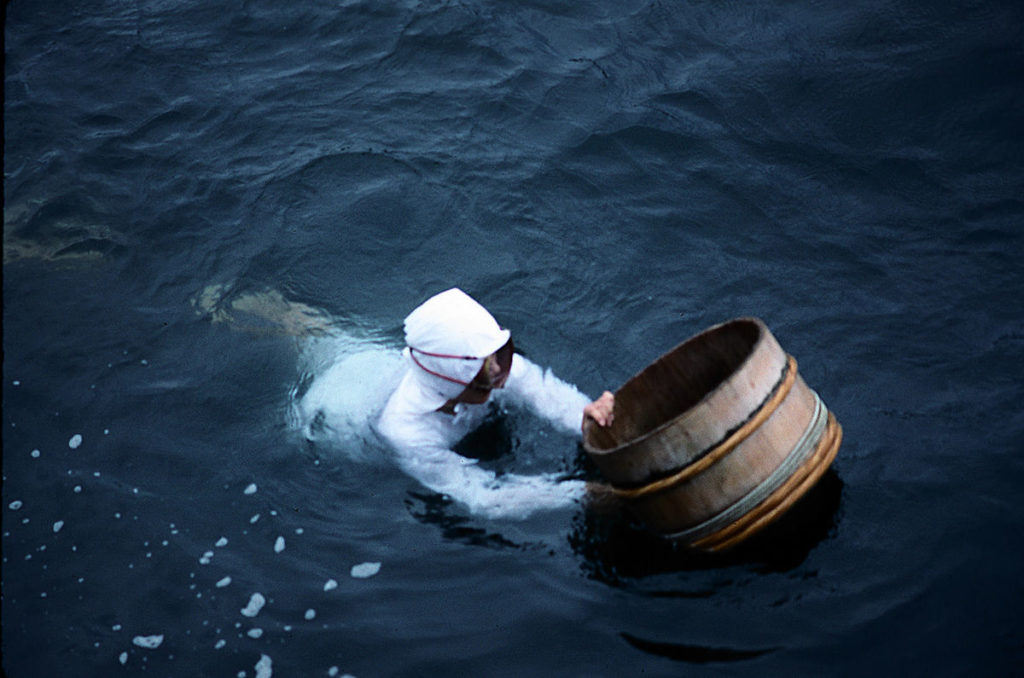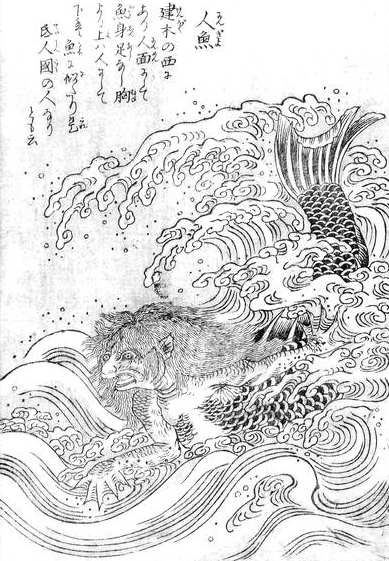
Could Japanese Ama Divers Be Linked to Mermaids?
 Mermaids have long held mysticism and fascination for many. They are believed to be aquatic creatures with the upper body of a human female and a fish tail instead of legs. The first tales of mermaids can be traced back to ancient Assyria, where the goddess Atargatis was driven by remorse after she accidentally killed her human lover and then transformed herself into a mermaid.
Mermaids have long held mysticism and fascination for many. They are believed to be aquatic creatures with the upper body of a human female and a fish tail instead of legs. The first tales of mermaids can be traced back to ancient Assyria, where the goddess Atargatis was driven by remorse after she accidentally killed her human lover and then transformed herself into a mermaid.
Ningyo (人魚, a fish person or “mermaid”) in Japan from the Konjaku Hyakki Shūi (今昔百鬼拾遺), circa 1780.
In Greek mythology, mermaids are considered the alluring sirens of the sea. Christopher Columbus also believed he had seen mermaids while exploring the Caribbean, and more sightings were reported in the 20th and 21st century from around the world.
Ama (海人, women; 海女, men 海士) are Japanese free divers known for collecting pearls. Most ama divers are women who seem to have lungs of steel. Ethno-historians believe that they initially traveled with the currents from continental Asia across to southern Japan where they were divided into two types of nomadic communities.
One group traveled to the coast of the Pacific Ocean, and the other, to the north Japan Sea coast. According to legend, one group was carried away by a typhoon to the north and was shipwrecked on the shores of Noto Peninsula on the Japan Sea. Even today, descendants of the original women ama divers still practice the ancient tradition of free diving. They continue with the semi-nomadic customs in the village of Osatsu along the coast of the Ise-Shima region in Mie Prefecture. Pearls from oysters are no longer the prized catch for the modern day women ama divers. Rather these are snails, clams, local abalone, and sea urchins, depending on the season.
Women divers were first mentioned on an ancient scroll from 927. The rich and colorful ama divers’ history is showcased at the Mikimoto Pearl Island Museum in Toba, which has a collection of ancient tools (like bone knives) found on the sea floor of the nearby areas that date back 3,000 years. Ama women divers do not need any modern day apparatus like what helps help deep sea divers breathe and stay longer underwater. With their graceful movements, and garbed in their traditional white uniform believed to keep sharks away, an ama diver can make any lonely sailor see a gorgeous mermaid emerging from the depths of the ocean.
